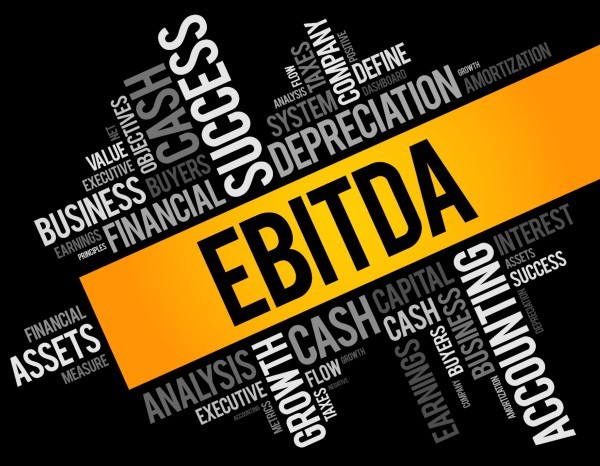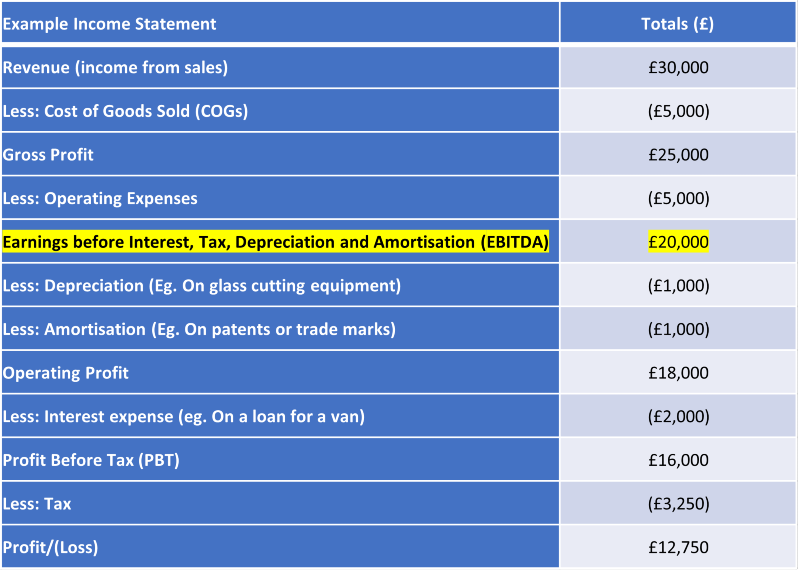
What is EBITDA?
EBITDA is a way to show a company’s profitability. It stands for Earnings Before Interest, Taxation, Depreciation and Amortisation. The measure was developed in the USA in the 1970s as a form of investor analysis, it became popular in the 1980s and has been part of our business language ever since.
Earnings are the profits available for dividends which can be paid out in dividends or added to the company’s balance sheet reserves.
Interest is the expense incurred by the company on its debt, or loan finance.
Taxation is the company’s liability arising on its profits for the year. In the UK, this is Corporation Tax. When interest and taxation are added back to earnings the resulting figure is commonly shown as Operating Profit.
Depreciation and Amortisation are figures that represent the reduction in value over time of tangible fixed assets (e.g. plant and equipment) as they become worn out, and the reduction in value of intangible assets such as goodwill or intellectual property.
Why ‘EBITDA’?
The EBITDA profit figure provides a useful way to compare how companies are performing as it is unaffected by the following factors:
- The nature of the company’s financing (debt or equity share capital),
- The level of taxation charged in a particular country,
- Whether any special taxes (such as windfall taxes) apply to the industry, or
- The company’s view and policy on depreciation and amortisation
It can therefore be applied to any company, in any country and in any industry.
Uses for EBITDA
There are several ways in which EBITDA can be useful as a means of measuring a company’s performance:
- For investors, EBITDA offers a way to compare different businesses before making investment decisions. It can also be used as a measure of a company’s financial health.
- Because the measure is employed so widely it is often the basis for valuing a company, for example when the company is being bought or sold.
- By the company’s bank or other financer if approached for a loan. It is much closer to the business’s actual annual cash surplus than the retained annual profit figure. Therefore, it can indicate how much a company can afford to pay back to a lender each year and consequently how much it should be able to borrow.
- Finally, the EBITDA figure should give a clearer and probably fairer view of how the business is performing and its long-term potential
Beware EBITDA
For all its applications, care needs to be taken when using EBITDA. On its own the measure can be deceptive, after all it is a higher number than retained profit and as it concentrates on earnings it does not indicate the company’s current debt position. Similarly, EBITDA does not account for changes in working capital so it may not pick up on a company’s liquidity.
So, any investor or lender should look at the balance sheet, the current level of debt finance, and the ratio of debt to share capital.
A worked example
As an example, let’s look at an annual income statement for a fictional picture framing business.

The EBITDA margin here is 67% (£20,000 / £30,000).
What is a ‘good’ EBITDA figure?
In general, an EBITDA of 60% would be considered a good level of profitability. However, this can vary enormously depending on the sector of operation, whether the company is providing a service or is selling a product, whether the business has just started up and as previously mentioned, how much debt has been accrued.
If you have a question about EBITDA, including how it applies to your business, please get in touch. Drop us a line at enquiries@torgersens.com and we’ll get back to you as soon as we can.




.jpg)



